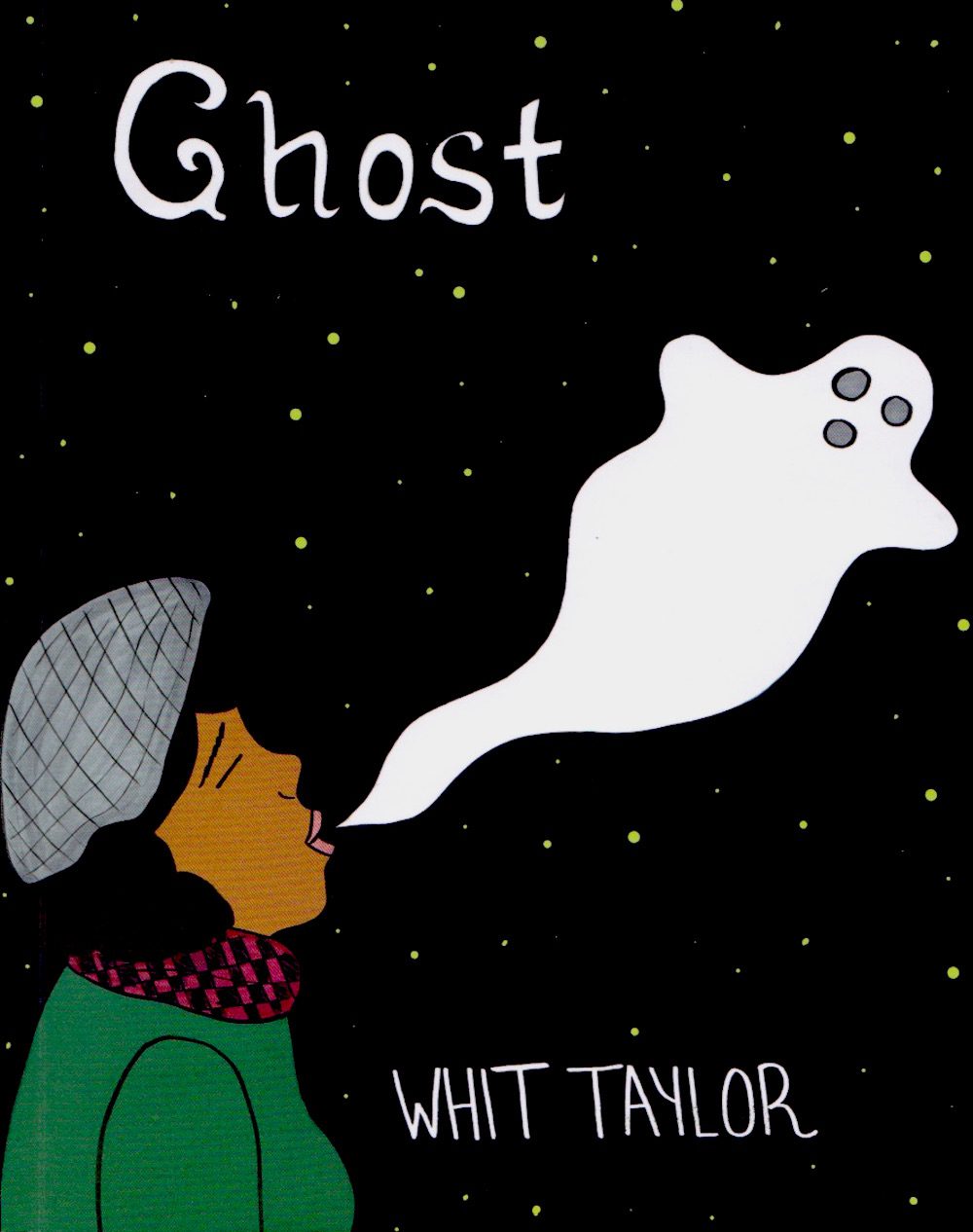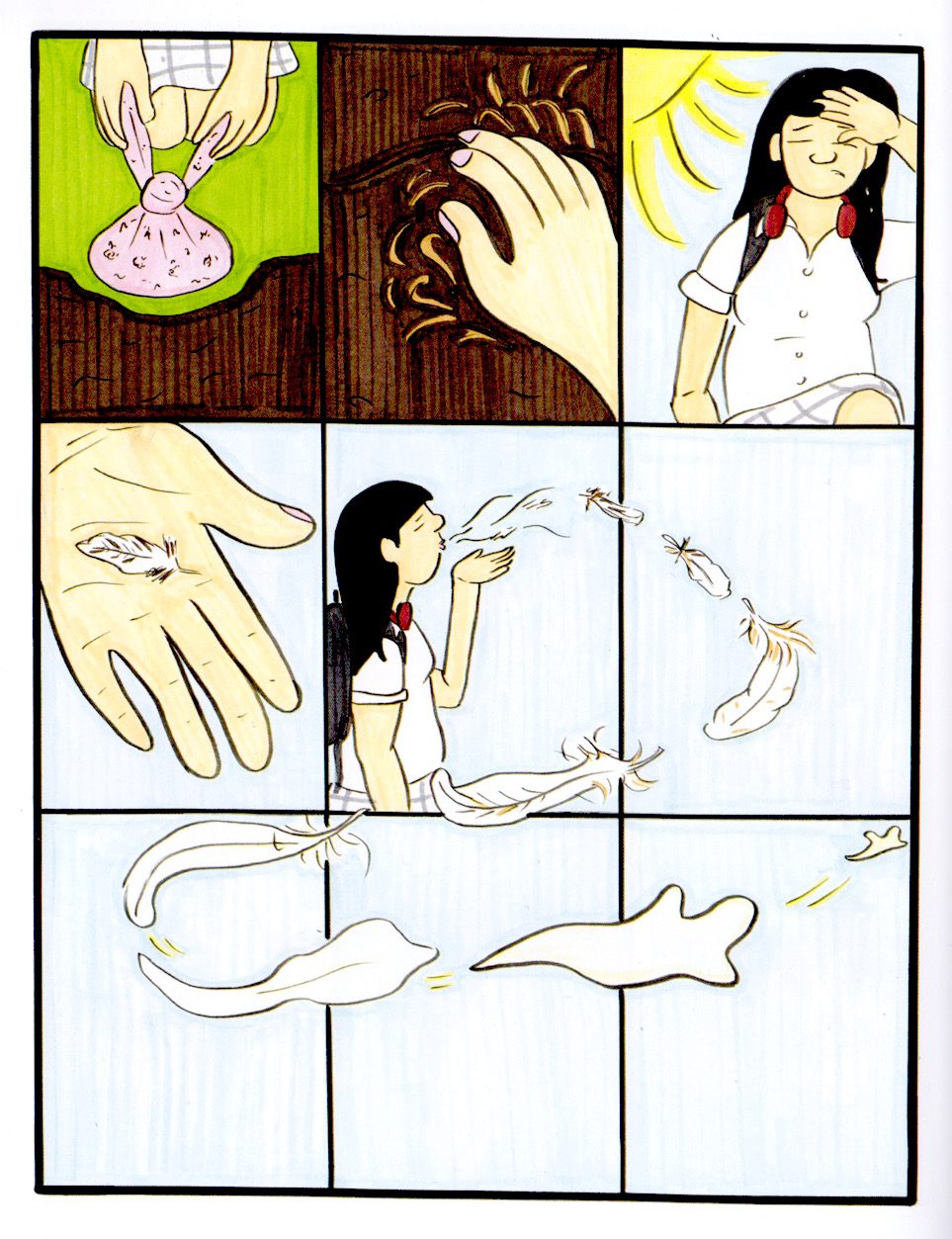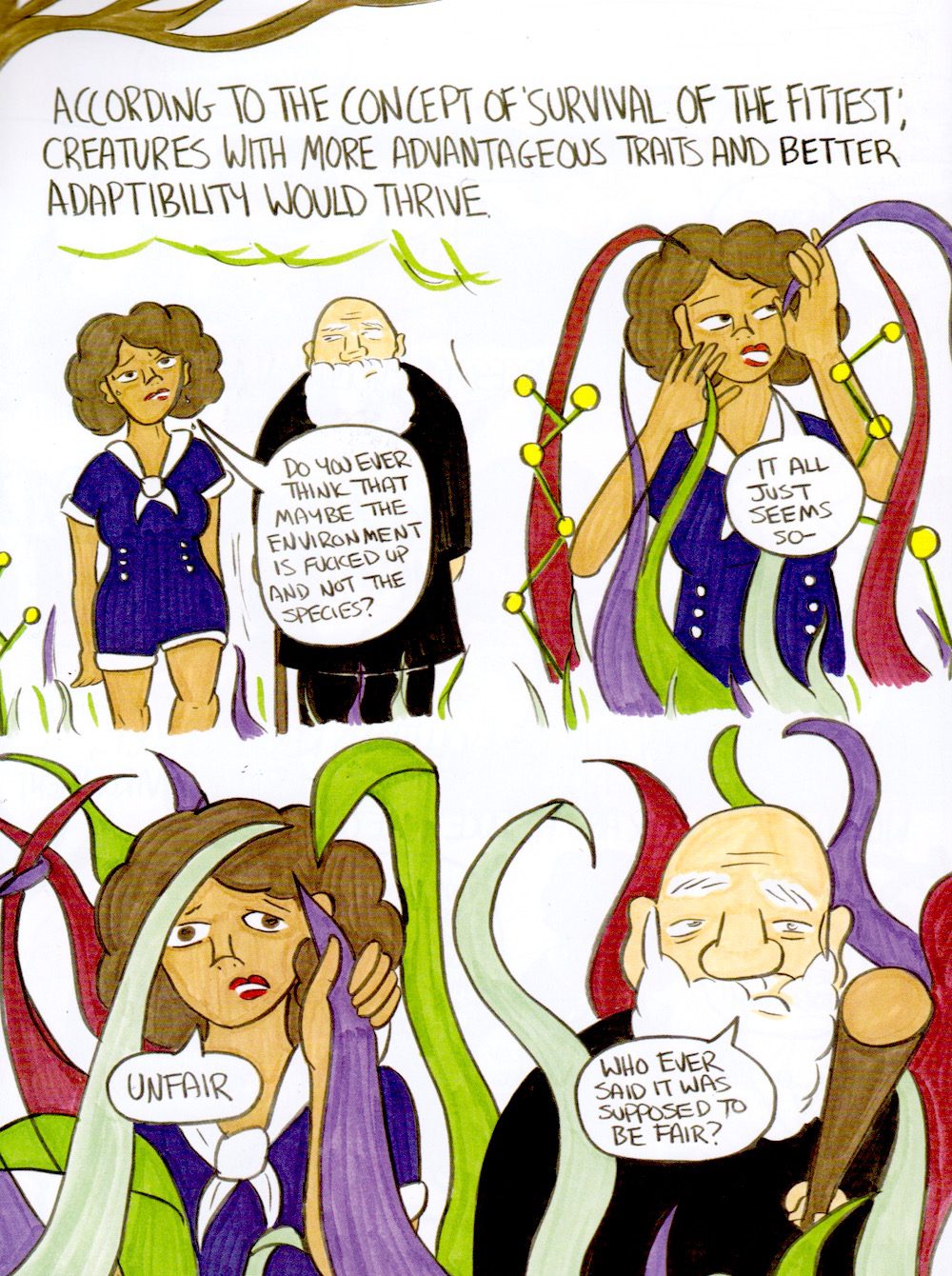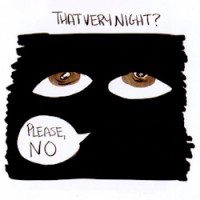If you’ve never heard of Whit Taylor, then now is the perfect time to discover her. Ghost (2015) is her understated masterpiece, self-published just months ago. As I began reading the book, I thought I was in for a nice little story about a young woman who wanted to meet her idols—Charles Darwin, Joseph Campbell et. al. Interesting, but not dynamic. But then, Taylor genuinely surprised me with an unexpected plot twist that not only made me rethink the cleverness of the entire book, but took me to a place I rarely am able to go when reading comics.
 As Taylor leads the journey of quippy and quirky interactions with brilliant but dead white men, I was very pleased to be refreshed on topics like Punctuated Equilibrium and the Hero’s Journey. It’s clear that Taylor is fascinated with a much bigger world than comics culture, and that’s especially cool in light of all the form-heavy, content-depleted comics I see nowadays. Taylor accents each of these idol encounters with two side stories—one, about an elderly woman who is gifted flowers from her dead husband in a dream. Another, of a young private school girl who mercifully kills and buries an injured bird. It’s clear that Taylor is experimenting with her narrative form, and getting some rich results.
As Taylor leads the journey of quippy and quirky interactions with brilliant but dead white men, I was very pleased to be refreshed on topics like Punctuated Equilibrium and the Hero’s Journey. It’s clear that Taylor is fascinated with a much bigger world than comics culture, and that’s especially cool in light of all the form-heavy, content-depleted comics I see nowadays. Taylor accents each of these idol encounters with two side stories—one, about an elderly woman who is gifted flowers from her dead husband in a dream. Another, of a young private school girl who mercifully kills and buries an injured bird. It’s clear that Taylor is experimenting with her narrative form, and getting some rich results.
Then, as she expects to meet her third idol—which would have been Marilyn Monroe—she instead encounters herself. Whit Taylor is confronted with Whit Taylor, and here begins the surprise plot twist. I almost don’t want to ruin it by writing too much, so I’ll just say that in the confrontation of the self, Taylor opens up about her struggle to heal after a physical attack that left her broken and scared. The two Whit Taylors—perhaps the “true” interior self and the functioning exterior self, or the “before the attack” and “after the attack” self—talk through her subsequent stages of PTSD. At different points, she pretended everything was fine, drank a lot of wine, focused exclusively on work, fell apart a little, got scared, got angry at Bill Cosby defenders, and then finally quit her job and spent time at an inpatient facility.
At different points, she pretended everything was fine, drank a lot of wine, focused exclusively on work, fell apart a little, got scared, got angry at Bill Cosby defenders, and then finally quit her job and spent time at an inpatient facility.
Unlike smooth computerized color fields or flattening zip tones, Taylor’s colored marker technique reveals each stroke complete with overlapping watermarks. Her graphics are not opaque—or some might judge “sophisticated”—but she makes the point well that comics for her are about process, and she doesn’t shy away from showing you that. For all of its depth, Ghost is surprisingly a short read at 58 pages, and can almost fit in your pocket (especially if you’re wearing JNCO jeans). I point these things out because size and formal technique are more often how brilliant comic works are identified, but this book shines in different ways.
I have to admit that Ghost chokes me up, and that’s the place I’m rarely able to go with comics. It’s clear that Taylor did some serious soul-searching and healing in order to produce this book, and the narrative reflects the intensity of that journey. She points to the vastness of evolution, the infiniteness of the universe, and the richness of epic storytelling through her encounters with her idols. And then she zooms in on the finite, the smaller instances of single life spans with individual stories of loss, letting go and death. And finally, she confronts her own story and somehow balances it between those two extreme benchmarks. The resolution: a deep exhale, and acceptance that, even in mid-sentence (which is how the book ends), you can really, truly learn to let things go. But that takes a long time and a lot of dedicated work to do that.
storytelling through her encounters with her idols. And then she zooms in on the finite, the smaller instances of single life spans with individual stories of loss, letting go and death. And finally, she confronts her own story and somehow balances it between those two extreme benchmarks. The resolution: a deep exhale, and acceptance that, even in mid-sentence (which is how the book ends), you can really, truly learn to let things go. But that takes a long time and a lot of dedicated work to do that.
I feel like I need to re-read this book several more times to appreciate its sophistication. This might be a real work of genius, but I can’t tell at this point. And really, what does it matter? The book is incredible, and I loved reading it. That’s what matters.




